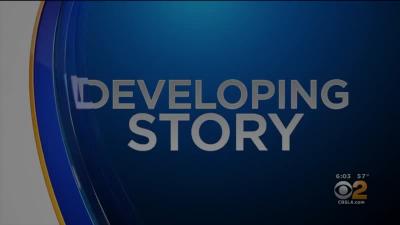Filtering by
- All Subjects: 49
- All Subjects: Land use
- Creators: Bardfeld, Sierra

This Project Report documents the accomplishments of an extraordinary group of students, faculty, and staff at the Arizona state University, who participated in a year-long, multidisciplinary, first-of-its-kind academic endeavor entitled “The Making of a COVID Lab.” The lab that is the focus of this project is the ASU Biodesign Clinical Testing Laboratory, known simply as the ABCTL.

Under the direction of Dr. Carolyn Compton, a group of seven Barrett honors students have embarked on a truly unique team thesis project to create a documentary on the process of creating a COVID-19 testing laboratory. This documentary tells the story of the ASU Biodesign Clinical Testing Laboratory (ABCTL), the first lab in the western United States to offer public saliva testing to identify the presence of COVID-19.

In the spring of 2016, the City of Apache Junction partnered with the School of Geographical Sciences and Urban Planning at Arizona State University on three forward-thinking plans for development in Apache Junction. Graduate students in the Urban and Environmental Planning program worked alongside City staff, elected officials and the public to identify opportunities and visions for:
1. Multi-modal access and connectivity improvements for City streets and open space.
2. Downtown development.
3. A master-planned community on state land south of the U.S. 60.
The following sections of the report present Apache Junction’s unique characteristics, current resident demographics, development needs and implementation strategies for each project:
1. Community Profile
2. Trail Connectivity Master Plan
3. Downtown Visioning
4. State Land Visioning
The Trail Connectivity Master Plan optimizes existing trails and wide road shoulders to improve multi-modal connections across the city. The proposed connections emphasize access to important recreation, education and other community facilities for pedestrians, equestrians and bicycles. Trail and lane designs recommend vegetated buffers, wherever possible, to improve traveler safety and comfort. The proposals also increase residents’ interaction with open space along urban-rural trails and park linkages to preserve opportunities to engage with nature. The objectives of the report are accomplished through three goals: connectivity, safety improvements and open space preservation.
Downtown Visioning builds on a large body of conceptual design work for Apache Junction’s downtown area along Idaho Road and Apache Trail. This report identifies three goals: to establish a town center, to reestablish the grid systems while maintaining a view of the Superstition Mountains, and to create an identity and sense of place for the downtown.
State Land Visioning addresses a tract of land, approximately 25 square miles in area, south of the U.S. 60. The main objective is to facilitate growth and proper development in accordance with existing goals in Apache Junction’s General Plan. This is accomplished through three goals:
1. Develop a foundation for the creation of an economic corridor along US-60 through
preliminary market research and land use planning.
2. Create multi-modal connections between existing development north of US-60 and
future recreational space northeast of US-60.
3. Maintain a large ratio of open space to developed area that encompasses existing
washes and floodplains using a master planned community framework to provide an
example for future land use planning.